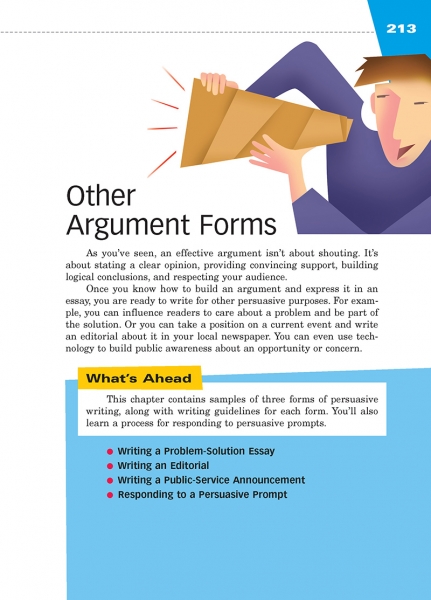Page 213 from

Start-Up Activity
Present students with these two different Google definitions of the term argue:
-
Give reasons or cite evidence in support of an idea, action, or theory, typically with the aim of persuading others to share one's view.
-
Exchange or express diverging or opposite views, typically in a heated or angry way.
Ask your students which of the two you want them to create when they make argument essays (obviously the first). Help them understand that the "heated or angry way" that dominates most arguments in our modern political scene is a problem, not a solution. Instead, they need to "cite evidence in support of an idea, action, or theory, typically with the aim of persuading others to share one's view."
Also share other persuasive (argument) essay examples.
Think About It
“It were not best that we should all think alike; it is difference of opinion that makes horse races.”
—Mark Twain

Start-Up Activity
Present students with these two different Google definitions of the term argue:
-
Give reasons or cite evidence in support of an idea, action, or theory, typically with the aim of persuading others to share one's view.
-
Exchange or express diverging or opposite views, typically in a heated or angry way.
Ask your students which of the two you want them to create when they make argument essays (obviously the first). Help them understand that the "heated or angry way" that dominates most arguments in our modern political scene is a problem, not a solution. Instead, they need to "cite evidence in support of an idea, action, or theory, typically with the aim of persuading others to share one's view."
Also share other persuasive (argument) essay examples.
Think About It
“It were not best that we should all think alike; it is difference of opinion that makes horse races.”
—Mark Twain
